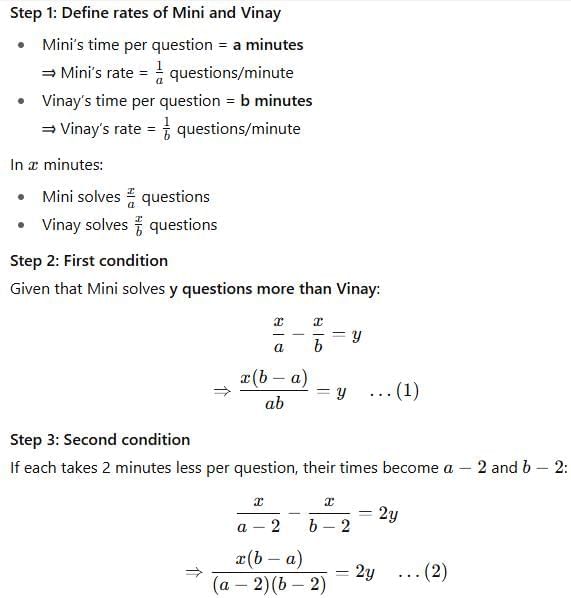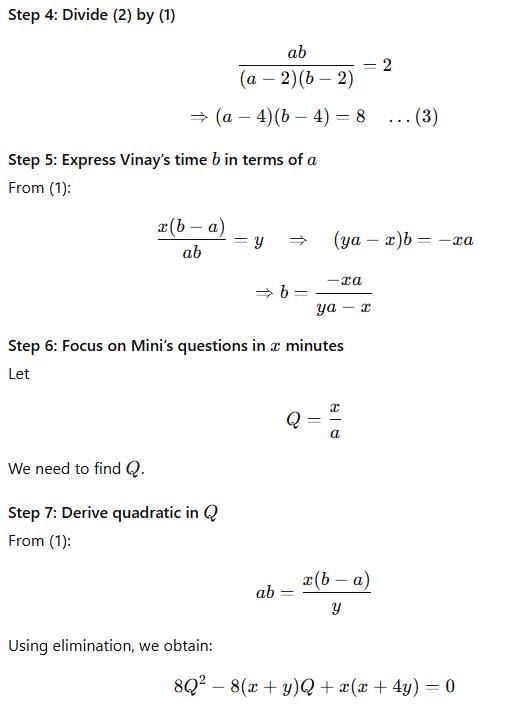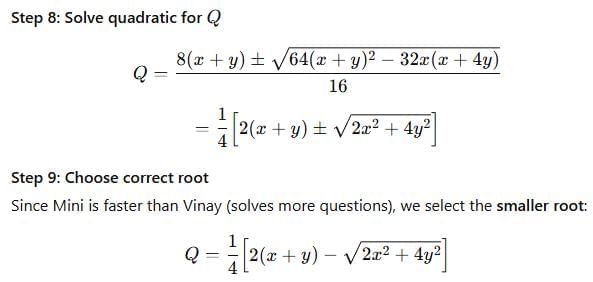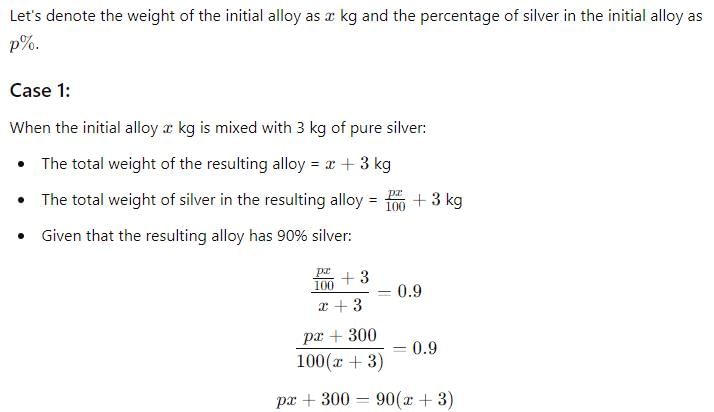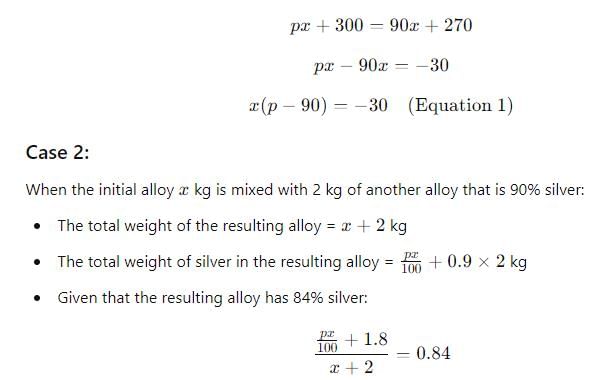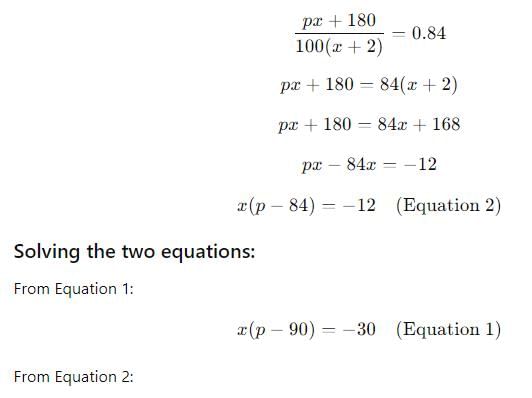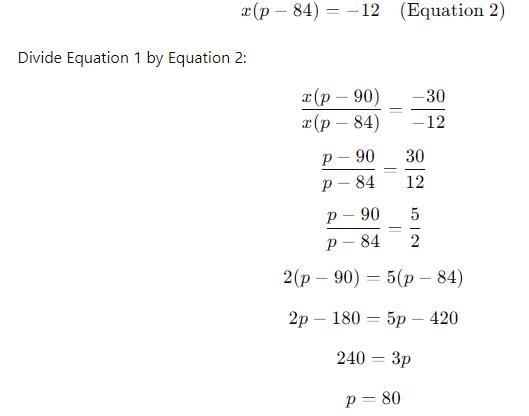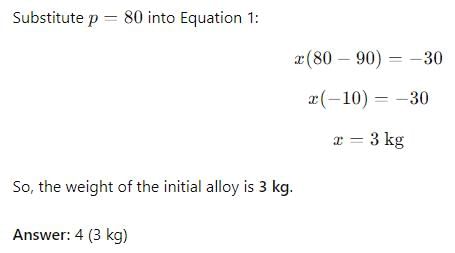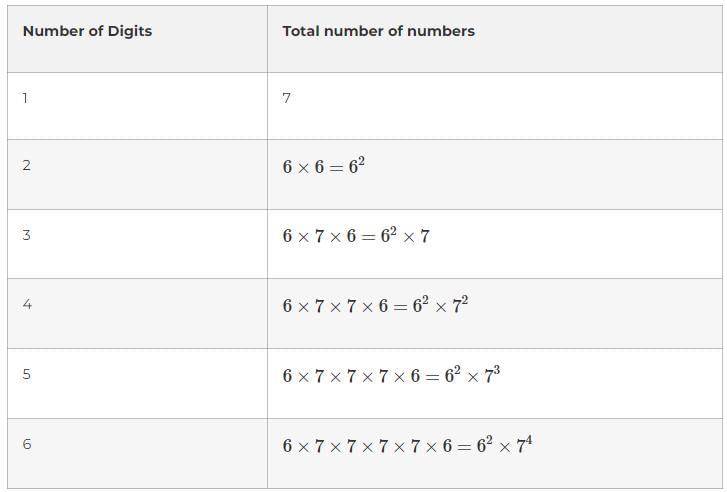CAT Mini Mock Test - 9 - CAT MCQ
30 Questions MCQ Test - CAT Mini Mock Test - 9
This year alone, more than 8,600 stores could close, according to industry estimates, many of them the brand- name anchor outlets that real estate developers once stumbled over themselves to court. Already there have been 5,300 retail closings this year...Sears Holdings—which owns Kmart—said in March that there's "substantial doubt" it can stay in business altogether, and will close 300 stores this year. So far this year, nine national retail chains have filed for bankruptcy.
Local jobs are a major casualty of what analysts are calling, with only a hint of hyperbole, the retail apocalypse. Since 2002, department stores have lost 448,000 jobs, a 25% decline, while the number of store closures this year is on pace to surpass the worst depths of the Great Recession. The growth of online retailers, meanwhile, has failed to offset those losses, with the e-commerce sector adding just 178,000 jobs over the past 15 years. Some of those jobs can be found in the massive distribution centers Amazon has opened across the country, often not too far from malls the company helped shutter.
But those are workplaces, not gathering places. The mall is both. And in the 61 years since the first enclosed one opened in suburban Minneapolis, the shopping mall has been where a huge swath of middle-class America went for far more than shopping. It was the home of first jobs and blind dates, the place for family photos and ear piercings, where goths and grandmothers could somehow walk through the same doors and find something they all liked. Sure, the food was lousy for you and the oceans of parking lots encouraged car- heavy development, something now scorned by contemporary planners. But for better or worse, the mall has been America's public square for the last 60 years.
So what happens when it disappears?
Think of your mall. Or think of the one you went to as a kid. Think of the perfume clouds in the department stores. The fountains splashing below the skylights. The cinnamon wafting from the food court. As far back as ancient Greece, societies have congregated around a central marketplace. In medieval Europe, they were outside cathedrals. For half of the 20th century and almost 20 years into the new one, much of America has found their agora on the terrazzo between Orange Julius and Sbarro, Waldenbooks and the Gap, Sunglass Hut and Hot Topic.
That mall was an ecosystem unto itself, a combination of community and commercialism peddling everything you needed and everything you didn't: Magic Eye posters, wind catchers, Air Jordans. ...
A growing number of Americans, however, don't see the need to go to any Macy's at all. Our digital lives are frictionless and ruthlessly efficient, with retail and romance available at a click. Malls were designed for leisure, abundance, ambling. You parked and planned to spend some time. Today, much of that time has been given over to busier lives and second jobs and apps that let you swipe right instead of haunt the food court. Malls, says Harvard business professor Leonard Schlesinger, "were built for patterns of social interaction that increasingly don't exist."
Q.
The central idea of this passage is that
This year alone, more than 8,600 stores could close, according to industry estimates, many of them the brand- name anchor outlets that real estate developers once stumbled over themselves to court. Already there have been 5,300 retail closings this year...Sears Holdings—which owns Kmart—said in March that there's "substantial doubt" it can stay in business altogether, and will close 300 stores this year. So far this year, nine national retail chains have filed for bankruptcy.
Local jobs are a major casualty of what analysts are calling, with only a hint of hyperbole, the retail apocalypse. Since 2002, department stores have lost 448,000 jobs, a 25% decline, while the number of store closures this year is on pace to surpass the worst depths of the Great Recession. The growth of online retailers, meanwhile, has failed to offset those losses, with the e-commerce sector adding just 178,000 jobs over the past 15 years. Some of those jobs can be found in the massive distribution centers Amazon has opened across the country, often not too far from malls the company helped shutter.
But those are workplaces, not gathering places. The mall is both. And in the 61 years since the first enclosed one opened in suburban Minneapolis, the shopping mall has been where a huge swath of middle-class America went for far more than shopping. It was the home of first jobs and blind dates, the place for family photos and ear piercings, where goths and grandmothers could somehow walk through the same doors and find something they all liked. Sure, the food was lousy for you and the oceans of parking lots encouraged car- heavy development, something now scorned by contemporary planners. But for better or worse, the mall has been America's public square for the last 60 years.
So what happens when it disappears?
Think of your mall. Or think of the one you went to as a kid. Think of the perfume clouds in the department stores. The fountains splashing below the skylights. The cinnamon wafting from the food court. As far back as ancient Greece, societies have congregated around a central marketplace. In medieval Europe, they were outside cathedrals. For half of the 20th century and almost 20 years into the new one, much of America has found their agora on the terrazzo between Orange Julius and Sbarro, Waldenbooks and the Gap, Sunglass Hut and Hot Topic.
That mall was an ecosystem unto itself, a combination of community and commercialism peddling everything you needed and everything you didn't: Magic Eye posters, wind catchers, Air Jordans. ...
A growing number of Americans, however, don't see the need to go to any Macy's at all. Our digital lives are frictionless and ruthlessly efficient, with retail and romance available at a click. Malls were designed for leisure, abundance, ambling. You parked and planned to spend some time. Today, much of that time has been given over to busier lives and second jobs and apps that let you swipe right instead of haunt the food court. Malls, says Harvard business professor Leonard Schlesinger, "were built for patterns of social interaction that increasingly don't exist."
Q.
Why does the author say in paragraph 2, 'the massive distribution centers Amazon has opened across the country, often not too far from malls the company helped shutter'?
This year alone, more than 8,600 stores could close, according to industry estimates, many of them the brand- name anchor outlets that real estate developers once stumbled over themselves to court. Already there have been 5,300 retail closings this year...Sears Holdings—which owns Kmart—said in March that there's "substantial doubt" it can stay in business altogether, and will close 300 stores this year. So far this year, nine national retail chains have filed for bankruptcy.
Local jobs are a major casualty of what analysts are calling, with only a hint of hyperbole, the retail apocalypse. Since 2002, department stores have lost 448,000 jobs, a 25% decline, while the number of store closures this year is on pace to surpass the worst depths of the Great Recession. The growth of online retailers, meanwhile, has failed to offset those losses, with the e-commerce sector adding just 178,000 jobs over the past 15 years. Some of those jobs can be found in the massive distribution centers Amazon has opened across the country, often not too far from malls the company helped shutter.
But those are workplaces, not gathering places. The mall is both. And in the 61 years since the first enclosed one opened in suburban Minneapolis, the shopping mall has been where a huge swath of middle-class America went for far more than shopping. It was the home of first jobs and blind dates, the place for family photos and ear piercings, where goths and grandmothers could somehow walk through the same doors and find something they all liked. Sure, the food was lousy for you and the oceans of parking lots encouraged car- heavy development, something now scorned by contemporary planners. But for better or worse, the mall has been America's public square for the last 60 years.
So what happens when it disappears?
Think of your mall. Or think of the one you went to as a kid. Think of the perfume clouds in the department stores. The fountains splashing below the skylights. The cinnamon wafting from the food court. As far back as ancient Greece, societies have congregated around a central marketplace. In medieval Europe, they were outside cathedrals. For half of the 20th century and almost 20 years into the new one, much of America has found their agora on the terrazzo between Orange Julius and Sbarro, Waldenbooks and the Gap, Sunglass Hut and Hot Topic.
That mall was an ecosystem unto itself, a combination of community and commercialism peddling everything you needed and everything you didn't: Magic Eye posters, wind catchers, Air Jordans. ...
A growing number of Americans, however, don't see the need to go to any Macy's at all. Our digital lives are frictionless and ruthlessly efficient, with retail and romance available at a click. Malls were designed for leisure, abundance, ambling. You parked and planned to spend some time. Today, much of that time has been given over to busier lives and second jobs and apps that let you swipe right instead of haunt the food court. Malls, says Harvard business professor Leonard Schlesinger, "were built for patterns of social interaction that increasingly don't exist."
Q.
In paragraph 1, the phrase "real estate developers once stumbled over themselves to court" suggests that they
This year alone, more than 8,600 stores could close, according to industry estimates, many of them the brand- name anchor outlets that real estate developers once stumbled over themselves to court. Already there have been 5,300 retail closings this year...Sears Holdings—which owns Kmart—said in March that there's "substantial doubt" it can stay in business altogether, and will close 300 stores this year. So far this year, nine national retail chains have filed for bankruptcy.
Local jobs are a major casualty of what analysts are calling, with only a hint of hyperbole, the retail apocalypse. Since 2002, department stores have lost 448,000 jobs, a 25% decline, while the number of store closures this year is on pace to surpass the worst depths of the Great Recession. The growth of online retailers, meanwhile, has failed to offset those losses, with the e-commerce sector adding just 178,000 jobs over the past 15 years. Some of those jobs can be found in the massive distribution centers Amazon has opened across the country, often not too far from malls the company helped shutter.
But those are workplaces, not gathering places. The mall is both. And in the 61 years since the first enclosed one opened in suburban Minneapolis, the shopping mall has been where a huge swath of middle-class America went for far more than shopping. It was the home of first jobs and blind dates, the place for family photos and ear piercings, where goths and grandmothers could somehow walk through the same doors and find something they all liked. Sure, the food was lousy for you and the oceans of parking lots encouraged car- heavy development, something now scorned by contemporary planners. But for better or worse, the mall has been America's public square for the last 60 years.
So what happens when it disappears?
Think of your mall. Or think of the one you went to as a kid. Think of the perfume clouds in the department stores. The fountains splashing below the skylights. The cinnamon wafting from the food court. As far back as ancient Greece, societies have congregated around a central marketplace. In medieval Europe, they were outside cathedrals. For half of the 20th century and almost 20 years into the new one, much of America has found their agora on the terrazzo between Orange Julius and Sbarro, Waldenbooks and the Gap, Sunglass Hut and Hot Topic.
That mall was an ecosystem unto itself, a combination of community and commercialism peddling everything you needed and everything you didn't: Magic Eye posters, wind catchers, Air Jordans. ...
A growing number of Americans, however, don't see the need to go to any Macy's at all. Our digital lives are frictionless and ruthlessly efficient, with retail and romance available at a click. Malls were designed for leisure, abundance, ambling. You parked and planned to spend some time. Today, much of that time has been given over to busier lives and second jobs and apps that let you swipe right instead of haunt the food court. Malls, says Harvard business professor Leonard Schlesinger, "were built for patterns of social interaction that increasingly don't exist."
Q.
The author calls the mall an ecosystem unto itself because Options :
According to the passage, colonial powers located their capitals:
According to the author, relocating government agencies has not always been a success for all of the following reasons EXCEPT:
The “long pedigree” of the aim to shift civil servants to improve their living standards implies that this move:
People who support decentralising central government functions are LEAST likely to cite which of the following reasons for their view?
Direction: The sentences given in the question, when properly sequenced, form a coherent paragraph. Each sentence is labeled with a letter. Choose the most logical order of sentences from the given choices to construct a coherent paragraph.
A. The main driving force of the British Empire’s global expansion was the pursuit of commercial interests.
B. That entailed helping the weaker side in order to promote a regional balance of power and preventing the rise of a regional power, or at least reducing its impact on British security and interests.
C. Creating a balance of power and fostering regional stability could help to realize commercial goals; hence these became the core of the British Empire’s strategy.
D. Britain put these practices to use in its continental policy for hundreds of years.
Which of the following four sentence is grammatically correct?
Directions:
In each of the following questions, there are four sentences or parts of sentences that form a paragraph. Identify the sentence(s) or part(s) of sentence(s) that is/are correct in terms of grammar and usage (including spelling, punctuation, and logical consistency). Then, choose the most appropriate option.
A. Liquid Comics, an entertainment company found by three Indians
B. have announced the digital iPad release of "Untouchable",
C. A graphic novel with a supernatural horror twist
D. exploring various themes of racial prejudice during the British Raj.
Instructions
Each visitor to an amusement park needs to buy a ticket. Tickets can be Platinum, Gold, or Economy. Visitors are classified as Old, Middle-aged, or Young. The following facts are known about visitors and ticket sales on a particular day:
1. 140 tickets were sold.
2. The number of Middle-aged visitors was twice the number of Old visitors, while the number of Young visitors was twice the number of Middle-aged visitors.
3. Young visitors bought 38 of the 55 Economy tickets that were sold, and they bought half the total number of Platinum tickets that were sold.
4. The number of Gold tickets bought by Old visitors was equal to the number of Economy tickets bought by Old visitors.
Q. If the number of Old visitors buying Platinum tickets was equal to the number of Middle-aged visitors buying Platinum tickets, then which among the following could be the total number of Platinum tickets sold?
Instructions
Each visitor to an amusement park needs to buy a ticket. Tickets can be Platinum, Gold, or Economy. Visitors are classified as Old, Middle-aged, or Young. The following facts are known about visitors and ticket sales on a particular day:
1. 140 tickets were sold.
2. The number of Middle-aged visitors was twice the number of Old visitors, while the number of Young visitors was twice the number of Middle-aged visitors.
3. Young visitors bought 38 of the 55 Economy tickets that were sold, and they bought half the total number of Platinum tickets that were sold.
4. The number of Gold tickets bought by Old visitors was equal to the number of Economy tickets bought by Old visitors.
Q. If the number of Old visitors buying Platinum tickets was equal to the number of Middle-aged visitors buying Economy tickets, then the number of Old visitors buying Gold tickets was
Instructions
Each visitor to an amusement park needs to buy a ticket. Tickets can be Platinum, Gold, or Economy. Visitors are classified as Old, Middle-aged, or Young. The following facts are known about visitors and ticket sales on a particular day:
1. 140 tickets were sold.
2. The number of Middle-aged visitors was twice the number of Old visitors, while the number of Young visitors was twice the number of Middle-aged visitors.
3. Young visitors bought 38 of the 55 Economy tickets that were sold, and they bought half the total number of Platinum tickets that were sold.
4. The number of Gold tickets bought by Old visitors was equal to the number of Economy tickets bought by Old visitors.
Q. If the number of Old visitors buying Gold tickets was strictly greater than the number of Young visitors buying Gold tickets, then the number of Middle-aged visitors buying Gold tickets was
Instructions
Each visitor to an amusement park needs to buy a ticket. Tickets can be Platinum, Gold, or Economy. Visitors are classified as Old, Middle-aged, or Young. The following facts are known about visitors and ticket sales on a particular day:
1. 140 tickets were sold.
2. The number of Middle-aged visitors was twice the number of Old visitors, while the number of Young visitors was twice the number of Middle-aged visitors.
3. Young visitors bought 38 of the 55 Economy tickets that were sold, and they bought half the total number of Platinum tickets that were sold.
4. The number of Gold tickets bought by Old visitors was equal to the number of Economy tickets bought by Old visitors.
Q. Which of the following statements MUST be FALSE?
Out of the two bar graphs provided below, one shows the amounts (in Lakh Rs.) invested by a Company in purchasing raw materials over the years and the other shows the values (in Lakh Rs.) of finished goods sold by the Company over the years.
Q.
The maximum difference between the amount invested in Raw materials and value of sales of finished goods was during the year?
Out of the two bar graphs provided below, one shows the amounts (in Lakh Rs.) invested by a Company in purchasing raw materials over the years and the other shows the values (in Lakh Rs.) of finished goods sold by the Company over the years.
The value of sales of finished goods in 1999 was approximately what percent of the sum of amount invested in Raw materials in the years 1997, 1998 and 1999?
Out of the two bar graphs provided below, one shows the amounts (in Lakh Rs.) invested by a Company in purchasing raw materials over the years and the other shows the values (in Lakh Rs.) of finished goods sold by the Company over the years.
What was the difference between the average amount invested in Raw materials during the given period and the average value of sales of finished goods during this period?
Out of the two bar graphs provided below, one shows the amounts (in Lakh Rs.) invested by a Company in purchasing raw materials over the years and the other shows the values (in Lakh Rs.) of finished goods sold by the Company over the years.
In which year, the percentage change (compared to the previous year) in the investment on Raw materials is same as that in the value of sales of finished goods?
Out of the two bar graphs provided below, one shows the amounts (in Lakh Rs.) invested by a Company in purchasing raw materials over the years and the other shows the values (in Lakh Rs.) of finished goods sold by the Company over the years.
In which year, there has been a maximum percentage increase in the amount invested in Raw materials as compared to the previous year?
After the division of a number successively by 3, 4 and 7, the remainders obtained are 2, 1 and 4 respectively. What will be the remainder if 84 divides the same number?
Mini and Vinay are quiz masters preparing for a quiz. In x minutes, Mini makes y questions more than Vinay. If it were possible to reduce the time needed by each to make a question by two minutes, then in x minutes Mini would make 2y questions more than Vinay. How many questions does Mini make in x minutes?
The monthly incomes of X and Y are in the ratio of 4:3 and their monthly expenses are in the ratio of 3:2. However, each saves Rs. 6,000 per month. What is their total monthly income?
If a certain weight of an alloy of silver and copper is mixed with 3 kg of pure silver, the resulting alloy will have 90% silver by weight. If the same weight of the initial alloy is mixed with 2 kg of another alloy which has 90% silver by weight, the resulting alloy will have 84% silver by weight. Then, the weight of the initial alloy, in kg, is
Sum of CP’s of two cows is Rs 13,000. Both the cows are sold at a profit of 20% and 40% respectively with their SP’s being the same. What is the difference of CPs of both the cows?
Read the passage below and solve the questions based on it* A number o f runners, numbered 1, 2. 3 , , N and so on, start simultaneously at the same point on a circular track and keep on running continuously in the same direction, around the track. They run in such a way that the speed of the runner numbered N (N>1) isN times that of the runner numbered 1 .
Q.
If there are exactly six runners, then at how many distinct points on the track is the runner numbered 1 overtaken by any of the other five runners?
A fair coin is tossed 10 times. Find the probability that two Heads do not occur consecutively.
What is the number of whole numbers formed on the screen of a calculator which can be recognised as numbers with (unique) correct digits when they are read inverted? The greatest number that can be formed on the screen of the calculator is 999999.
How many terms are there in the GP 5, 20, 80, 320,… 20480?
A man rows to a place 48 km distant and come back in 14 hours. He finds that he can row 4 km with the stream in the same time as 3 km against the stream. The rate of the stream is:











